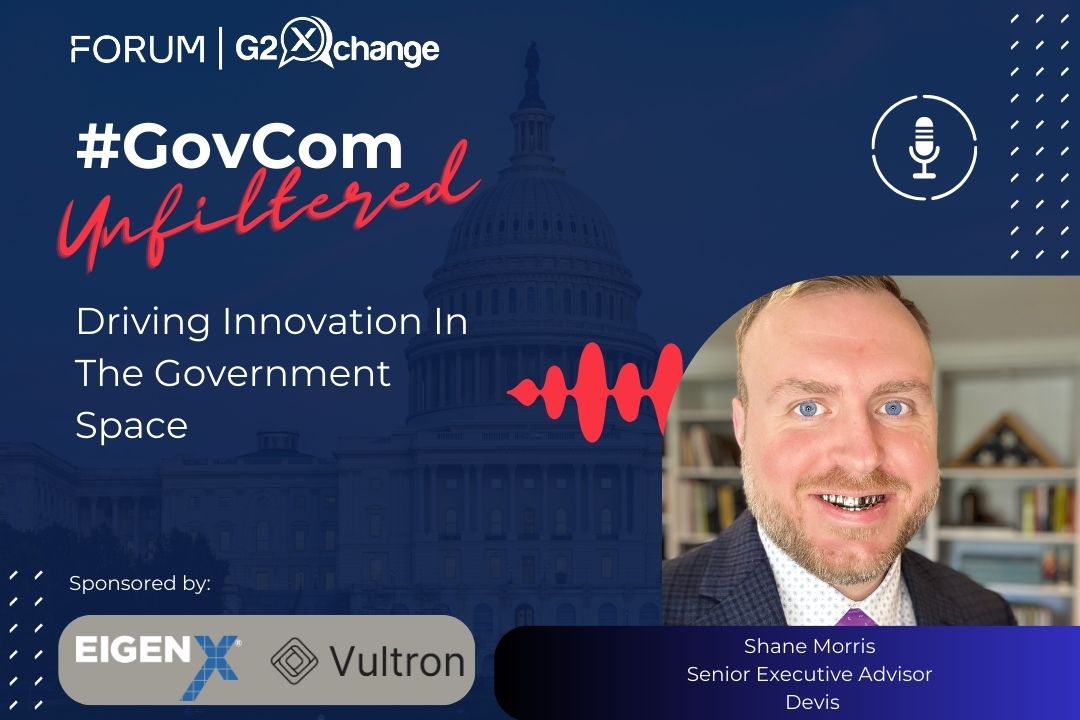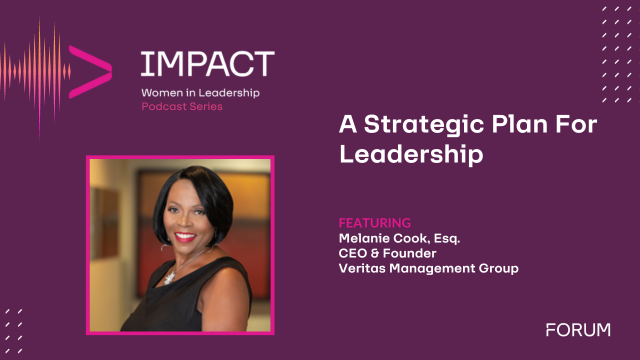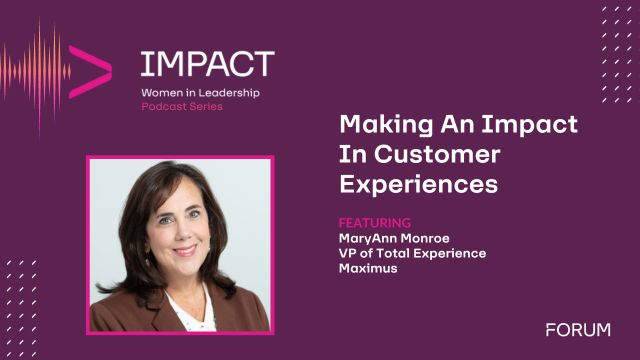While the Healthcare industry has seen innovation accelerate since the beginning of the pandemic, there are still endless opportunities in Federal health technology to improve patient outcomes and Healthcare more broadly. This interview with Dr. Joseph Frassica, Head of Research for the Americas, Chief Medical Officer, Philips North America looks at collaboration and investment in emerging technology, the clinician/technology disconnect, and the post-COVID world.
Investing in Emerging Technology
In 2020, Philips invested over $2.1B in R&D, with 40 percent of that budget spent in the United States. Nearly half of our research personnel worldwide are focused on data science and software. In our lab in Cambridge, Mass., it’s closer to 80 percent focused on software, data science, artificial intelligence, and machine learning.
We do a lot of R&D work with the Department of Veterans Affairs; a recent effort includes developing virtual clinics with the VFW and American Legion to service VA patients through the ATLAS (Accessing Telehealth through Local Area Stations) program. Using Philips’ remote monitoring solutions and secure networking, Veterans can interact with VA clinicians wherever they are. We use various electronic devices to help bring the patient closer to the clinician, including electronic scales, blood pressure cuffs, thermometers, pulse oximeters, and high-speed video to make that interaction real-time.
Philips also supports VA inpatient facilities through imaging solutions and critical care information systems. Through our eICU program, the industry’s largest tele-ICU program, we use A/V technology, predictive analytics, data visualization, and advanced reporting capabilities to assist VA bedside teams and continuously advance the established plan of care for ICU patients.
Breakthrough Technology
There is a program Philips has started with the Defense Innovation Unit and the Defense Threat Reduction Agency called RATE – Rapid Assessment of Threat Exposure – which is focused on detecting the onset of infectious disease. This was actually initiated pre-COVID based on the idea that for Force Readiness, it would be valuable to detect the onset of infectious disease before it was suspected. At the time, we focused on infections such as influenza.
The effort is based on an algorithm that could use physiological markers and biomarkers to identify those who are going to become sick with infectious disease. It started with a large-scale, inpatient dataset of about five million patients, and we pulled out about 135 biomarkers that were predictors of the onset of infectious disease. We then applied machine learning and artificial intelligence techniques to refine the data and begin to develop a predictive algorithm.
At the onset of COVID we looked to prove the value for the ambulatory patient. Utilizing 11,000 DOD members and a small VA contingent outfitted with wearables, we refined the algorithm to predict the onset of COVID and other infectious diseases in the community.
We’re also working with the Biomedical Advanced Research and Development Authority (BARDA) to develop an AI-driven ultrasound device that will enhance our nation’s ability to respond to multicasualty traumatic incidents and infectious disease outbreaks such as COVID-19. The ultimate goal will be to democratize the use of ultrasound technology for use in these critical situations so that it can be applied by a wider group of users with varying skill levels.
Enhanced R&D Collaboration
Philips understood more than a decade ago that the rate of innovation increases with collaboration. That’s why in 2015, we relocated our North America Research program to Cambridge because of the proximity to the clinical nexus of innovation with Mass General Brigham, Beth Israel Deaconess and Boston Medical Center, and major academic centers like MIT and Boston University.
From that ecosystem came a long-term partnership with MIT, focused on creating innovations that are unique and will have an impact. One such project involves traumatic brain injury and a model that uses ultrasound and patient monitoring to estimate and follow intracranial pressure that avoids the practice of drilling a hole in the skull. That project is now in the midst of a DOD funding cycle with the hopes that it will be able to provide better field triage capability.
Additionally, the availability of data is a key driver behind AI advancement. Philips, MIT, and Beth Israel have been working for more than a decade to collect data from the Beth Israel Deaconess Hospital so we now we have over 40,000 patients in this highresolution database. This trove of data, the MIMIC Database (available from MIT at https://physionet. org/content/mimiciv/1.0/), is part of an NIH-funded project and from the outset, it was designed to be a public resource. It is now touched thousands of times a day by researchers from around the world.
Another valuable dataset, our eICU Database, is comprised of dataset from millions of patients, and also contains high-resolution physiologic data. Portions of this database have also been made available as the eICU Collaborative Research Database (available from MIT at https://eicu-crd.mit. edu), and represents the largest high-resolution ICU dataset in the world.
The Technology/Clinician Disconnect
The reality is that technology companies have always created technology and then tried to hand it over the wall to clinicians, so there’s always been a technology push that doesn’t necessarily correlate to clinician need. The better way to make improvements in care is to work with collaborators in the field, to work with people at the bedside to create the best technology for their specific problem. We call that need-seeking.
We’ve developed programs across Philips to teach people how to become need-seekers, to identify problems with clinical and bedside providers, to allow us to create solutions, not technologies.
These solutions then are more tuned to what is needed in the field and less likely to be a one-off technology that goes nowhere. We now create solutions with innovation ecosystems and partners.
Advice to Improve Breakthrough Technology
Companies are in business to survive and earn money. However, strict competition is no longer possible. We need to focus on what we call coopetition with partners around the Healthcare industry. Collaboration with partners in academia and in the clinical setting is an ideal way to drive solutions that make a difference.
Our databases that are open for use are based on the idea that sharing data is the right thing to do. This means that if a researcher from another company or from an academic institution wants to use that dataset, they sign on and they can use it, and it helps us all. As those collaborative efforts grow, ideas are generated and we can all come together to move them forward. The key is collaboration – with Government, with other industry partners and other academics and clinical systems – as the tool to driving breakthrough technology with a purpose.
The New Face of R&D Post COVID
COVID has changed some things and reinforced some of our approaches. COVID has also helped us to accelerate in certain areas, like the prediction of infectious disease. This might have taken longer had we not had a pandemic that affected every person.
We’ll see the continued use of artificial intelligence to improve care and machine learning, and we hope to extend RATE and other programs to the consumer space, to make us more prepared as a nation and maybe to help prepare the world for the next pandemic.
COVID taught us that we need to be prepared to be flexible, to be able to help customers and their patients in these times of stress. Philips, for instance, developed a monitoring solution that was pre-packaged, that allowed for the opening of an ICU ward in a day with a delivery of cases of patient monitoring and network equipment. We had teams who were in field hospitals and in popup care settings around the U.S. and around the world, installing devices from these pre-configured models of care out of the box.
The Follow-On
COVID and the pandemic has pushed innovation more quickly. Through the use of the Emergency Use Authorization, organizations have pushed innovations into the market that have the potential to help. There’s a risk to that in the long-term, however, and now we need to assess these new technologies that have flooded the market to be sure that everything that’s been introduced has the quality and safety that we would normally expect.
A few things have come to the floor that won’t go away, including the focus on virtual care. The benefit to the clinician and the patient is clear. Think about VA’s advancement of telehealth to be able to touch Veterans around the country where there aren’t VA medical centers within hundreds of miles.
A lot of this is just common sense and is centered around the most important aspect of it all: doing the right thing. With the technology in place and the opportunity to do better, this innovation will make a big impact on patients around the U.S., around the VA, and around the world.
About Joseph J. Frassica
 Joseph J. Frassica, MD, is Head of Philips Research for the Americas and Chief Medical Officer, Philips North America where he is focused on leading a broad-based medical, science and technology team to bring clinically meaningful innovation to the bedside. In addition, Joe also serves as Professor of the Practice in the Institute for Medical Engineering and Science of Massachusetts Institute of Technology, on Staff in Pediatric Critical Care at the Massachusetts General Hospital, and as Pediatric Editor for the Journal of Intensive Care Medicine.
Joseph J. Frassica, MD, is Head of Philips Research for the Americas and Chief Medical Officer, Philips North America where he is focused on leading a broad-based medical, science and technology team to bring clinically meaningful innovation to the bedside. In addition, Joe also serves as Professor of the Practice in the Institute for Medical Engineering and Science of Massachusetts Institute of Technology, on Staff in Pediatric Critical Care at the Massachusetts General Hospital, and as Pediatric Editor for the Journal of Intensive Care Medicine.
Within Philips Research, he leads a team focused on the areas of: Predictive analytics, natural language processing, clinical informatics, machine learning, genomics/bioinformatics, infectious disease, and medical ultrasound, interventional guidance, planning, and assessment. Some of his lab’s current projects include: Applying AI/Machine Learning to develop predictive algorithms for multiple disease states using high resolution clinical and physiologic data and developing AI-Based Ultrasound guidance to aid in image acquisition and diagnosis of traumatic injury and pregnancy.
Other featured articles from this year’s edition are available here.












